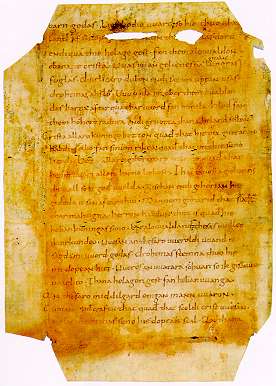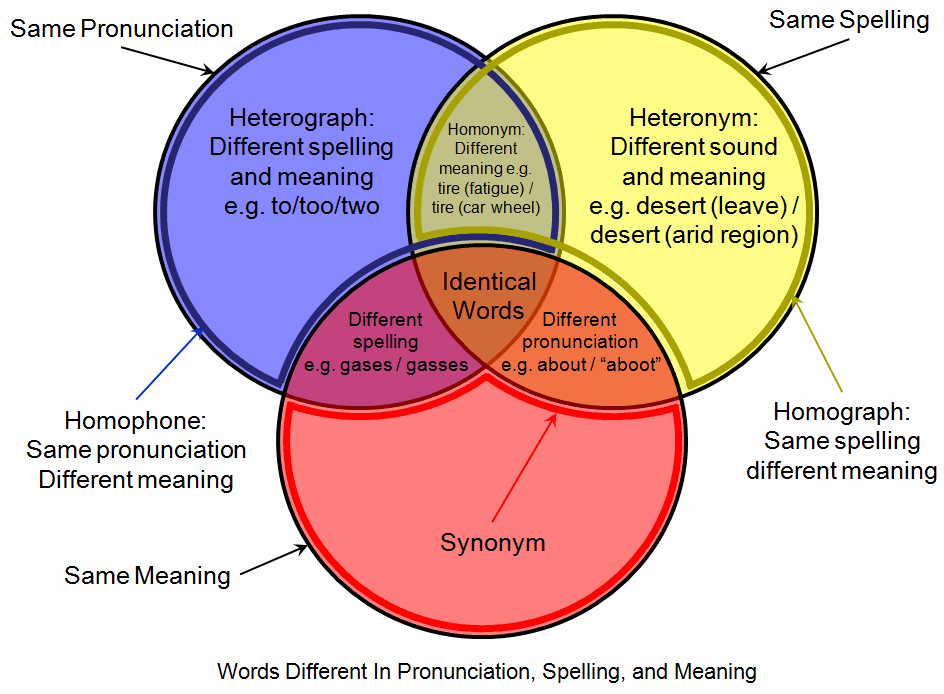|
Hóp (Vinland)
Vinland, Vineland, or Winland () was an area of coastal North America explored by Vikings. Leif Erikson landed there around 1000 AD, nearly five centuries before the voyages of Christopher Columbus and John Cabot. The name appears in the Vinland Sagas and describes a land beyond Greenland, Helluland, and Markland. Much of the geographical content of the sagas corresponds to present-day knowledge of transatlantic travel and North America. In 1960, archaeological evidence of the only known Norse site in North America, L'Anse aux Meadows, was found on the northern tip of the island of Newfoundland. Before the discovery of archaeological evidence, Vinland was known only from the sagas and medieval historiography. The 1960 discovery further proved the pre-Columbian Norse exploration of mainland North America. Archaeologists found butternuts at L'Anse aux Meadows, which indicates voyages into the Gulf of Saint Lawrence as far as northeastern New Brunswick. L'Anse aux Meadows ... [...More Info...] [...Related Items...] OR: [Wikipedia] [Google] [Baidu] |
L'Anse Aux Meadows, Recreated Long House
L'Anse may refer to: ;In Canada: *L'Anse aux Meadows, Newfoundland *L'Anse-Saint-Jean, Quebec ;In the United States *L'Anse, Michigan, a village in the Upper Peninsula *L'Anse Township, Michigan *L'Anse Indian Reservation ;Elsewhere: *L'Anse Mitan, Trinidad and Tobago {{geodis ... [...More Info...] [...Related Items...] OR: [Wikipedia] [Google] [Baidu] |
Straumfjörð
Straumfjörður ( Icelandic), or Straumfjǫrðr (Old Norse), sometimes anglicised to Straumsfjordr,''Sveinbjörn Þórðarsson''The Saga of Erik the Red - Icelandic Saga Database/ref> Straumfjordr, Straumsfjord or Straumfjord, is according to the Sagas of Icelanders a fjord in Vinland where Thorfinn Karlsefni set up a temporary settlement. It is described in the ''Saga of Erik the Red'', but not in the '' Greenland saga''. Its name translates to "Current-fjord", "Stream-fjord" or "Tide-fjord". Two somewhat different versions of the travels of Karlsefni appear in the sagas; they are found in the ''Hauksbók'' and the ''Flateyjarbók''. They tell that ''Straumsey'' (Current-isle) lies at the mouth of Straumfjörð; this is an island with an extreme density of birds. The whereabouts of Straumfjörðcomplete with its associated island of ''Straumsey''has been, and is, subject to intense speculation, with at least 15 suggested locations on the Atlantic coast of North America. These p ... [...More Info...] [...Related Items...] OR: [Wikipedia] [Google] [Baidu] |
Fruit Wine
Fruit wines are fermented alcoholic beverages made from a variety of base ingredients (other than grapes); they may also have additional flavors taken from fruits, flowers, and herbs. This definition is sometimes broadened to include any alcoholic fermented beverage except beer. For historical reasons, cider and perry are also excluded from the definition of fruit wine.J. Robinson (ed) ''"The Oxford Companion to Wine"'' Third Edition pg 768 Oxford University Press 2006 Fruit wines have traditionally been popular with home winemakers and in areas with cool climates such as North America and Scandinavia. In subtropical climates, such as in East Africa, India, and the Philippines, wine is made from bananas. Labeling Fruit wines are usually referred to by their main ingredient (e.g., ''plum wine'' or ''elderberry wine'') because the usual definition of wine states that it is made from fermented grape juice. In the European Union, wine is legally defined as the fermented juice o ... [...More Info...] [...Related Items...] OR: [Wikipedia] [Google] [Baidu] |
Wineberry '', a fruit also called Bilberry
{{Plant common name ...
Wineberry may refer to the following plants: * ''Aristotelia chilensis'', Chilean wineberry * ''Aristotelia serrata'', a tree which is endemic to New Zealand * ''Rubus phoenicolasius'', a type of raspberry native to Asia and introduced to North America * ''Vaccinium myrtillus ''Vaccinium myrtillus'' or European blueberry is a Holarctic realm, holarctic species of shrub with edible fruit of blue color, known by the common names bilberry, blaeberry, wimberry, and whortleberry. It is more precisely called common bilberr ... [...More Info...] [...Related Items...] OR: [Wikipedia] [Google] [Baidu] |
Grœnlendinga Saga
''Grœnlendinga saga'' () (spelled ''Grænlendinga saga'' in modern Icelandic and translated into English as the Saga of the Greenlanders) is one of the sagas of Icelanders. Like the ''Saga of Erik the Red'', it is one of the two main sources on the Norse colonization of the Americas, Norse colonization of North America. The saga recounts events that purportedly happened around 1000 and is preserved only in the late 14th century ''Flateyjarbók'' manuscript. The ''Saga of the Greenlanders'' starts with Erik the Red, who leaves Norway and colonizes Greenland. It then relates six expeditions to North America, led respectively by Bjarni Herjolfsson, Leif Erikson, Thorvald Eriksson, Thorstein Eriksson and his wife Gudrid Thorbjarnardóttir, Thorfinn Karlsefni, and Freydís Eiríksdóttir. Bjarni and his crew discover three lands by chance during their voyage to Greenland, but they never set foot on the lands themselves. Leif learns about Bjarni's encounters and, after buying Bjarni's s ... [...More Info...] [...Related Items...] OR: [Wikipedia] [Google] [Baidu] |
Old High German
Old High German (OHG; ) is the earliest stage of the German language, conventionally identified as the period from around 500/750 to 1050. Rather than representing a single supra-regional form of German, Old High German encompasses the numerous West Germanic languages, West Germanic dialects that had undergone the set of sound change, consonantal changes called the High German consonant shift, Second Sound Shift. At the start of this period, dialect areas reflected the territories of largely independent tribal kingdoms, but by 788 the conquests of Charlemagne had brought all OHG dialect areas into a single polity. The period also saw the development of a stable linguistic border between German and Gallo-Romance languages, Gallo-Romance, later French language, French. Old High German largely preserved the synthetic language, synthetic inflectional system inherited from its ancestral Germanic forms. The eventual disruption of these patterns, which led to the more analytic language ... [...More Info...] [...Related Items...] OR: [Wikipedia] [Google] [Baidu] |
Old Saxon
Old Saxon (), also known as Old Low German (), was a Germanic language and the earliest recorded form of Low German (spoken nowadays in Northern Germany, the northeastern Netherlands, southern Denmark, the Americas and parts of Eastern Europe). It is a West Germanic language, closely related to the Anglo-Frisian languages. It is documented from the 8th century until the 12th century, when it gradually evolved into Middle Low German. It was spoken throughout modern northwestern Germany, primarily in the coastal regions and in the eastern Netherlands by Saxons, a Germanic tribe that inhabited the region of Saxony. It partially shares Anglo-Frisian's ( Old Frisian, Old English) Ingvaeonic nasal spirant law which sets it apart from Low Franconian and Irminonic languages, such as Dutch, Luxembourgish and German. The grammar of Old Saxon was fully inflected with five grammatical cases ( nominative, accusative, genitive, dative, and instrumental), three grammati ... [...More Info...] [...Related Items...] OR: [Wikipedia] [Google] [Baidu] |
Homophone
A homophone () is a word that is pronounced the same as another word but differs in meaning or in spelling. The two words may be spelled the same, for example ''rose'' (flower) and ''rose'' (past tense of "rise"), or spelled differently, as in ''rain'', ''reign'', and ''rein''. The term ''homophone'' sometimes applies to units longer or shorter than words, for example a phrase, letter, or groups of letters which are pronounced the same as a counterpart. Any unit with this property is said to be ''homophonous'' (). Homophones that are spelled the same are both homographs and homonyms. For example, the word ''read'', in "He is well ''read''" and in "Yesterday, I ''read'' that book". Homophones that are spelled differently are also called heterographs, e.g. ''to'', ''too'', and ''two''. Wordplay and games Homophones are often used to create puns and to deceive the reader (as in crossword puzzles) or to suggest multiple meanings. The last usage is common in poetry and creat ... [...More Info...] [...Related Items...] OR: [Wikipedia] [Google] [Baidu] |
Old Norse
Old Norse, also referred to as Old Nordic or Old Scandinavian, was a stage of development of North Germanic languages, North Germanic dialects before their final divergence into separate Nordic languages. Old Norse was spoken by inhabitants of Scandinavia and their Viking expansion, overseas settlements and chronologically coincides with the Viking Age, the Christianization of Scandinavia, and the consolidation of Scandinavian kingdoms from about the 8th to the 15th centuries. The Proto-Norse language developed into Old Norse by the 8th century, and Old Norse began to develop into the modern North Germanic languages in the mid- to late 14th century, ending the language phase known as Old Norse. These dates, however, are not precise, since written Old Norse is found well into the 15th century. Old Norse was divided into three dialects: Old West Norse (Old West Nordic, often referred to as ''Old Norse''), Old East Norse (Old East Nordic), and Old Gutnish. Old West Norse and O ... [...More Info...] [...Related Items...] OR: [Wikipedia] [Google] [Baidu] |
Etymology
Etymology ( ) is the study of the origin and evolution of words—including their constituent units of sound and meaning—across time. In the 21st century a subfield within linguistics, etymology has become a more rigorously scientific study. Most directly tied to historical linguistics, philology, and semiotics, it additionally draws upon comparative semantics, morphology, pragmatics, and phonetics in order to attempt a comprehensive and chronological catalogue of all meanings and changes that a word (and its related parts) carries throughout its history. The origin of any particular word is also known as its ''etymology''. For languages with a long written history, etymologists make use of texts, particularly texts about the language itself, to gather knowledge about how words were used during earlier periods, how they developed in meaning and form, or when and how they entered the language. Etymologists also apply the methods of comparative linguistics to reconstruct in ... [...More Info...] [...Related Items...] OR: [Wikipedia] [Google] [Baidu] |
Svend Estridson
Sweyn II ( – 28 April 1076), also known as Sweyn Estridsson (, ) and Sweyn Ulfsson, was King of Denmark from 1047 until his death in 1076. He was the son of Ulf Thorgilsson and Estrid Svendsdatter, and the grandson of Sweyn Forkbeard through his mother's line. He was married at least two times, and fathered 20 children or more out of wedlock, including the five future kings Harald Hen, Saint Canute, Oluf Hunger, Eric Evergood, and Niels. He was courageous in battle, but did not have much success as a military commander. His skeleton reveals that he was a tall, powerfully built man who walked with a limp. Biography Accession to the throne Sweyn was born in England, Bricka, Carl Frederik, ''Dansk Biografisk Lexikon'', vol. XVII vend Tveskjæg – Tøxen 1903pp.3–5 as the son of Ulf Thorgilsson and Estrid Svendsdatter, the latter of whom was the daughter of King Sweyn I Forkbeard and sister of Kings Harald II and Canute the Great. Sweyn grew up a military leader, and serve ... [...More Info...] [...Related Items...] OR: [Wikipedia] [Google] [Baidu] |





